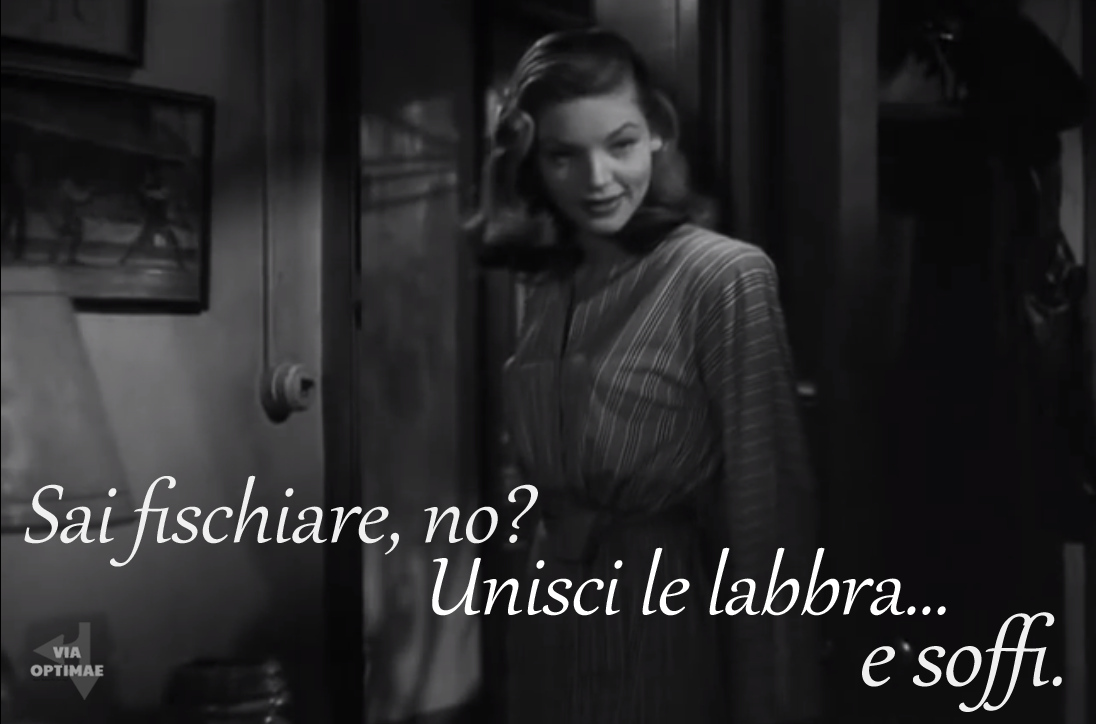You're lounging on a boat… gently cruising through the crystal blue waters of the Mediterranean, taking in the many sights and sounds of the Aeolian Islands off the coast of Sicily. You decide to write a letter describing everything you see.
 |
| image via Turismo Eolie |
"There is… There is…"
Hmm. Maybe you'll start with the boats you see behind you?
"There are… There are…"
"Ah! If only I'd studied 'There is' and 'There are' in Italian!" you think to yourself.
You wake suddenly and realize you're not on a boat in the Mediterranean and that knowing "There is" or "There are" isn't the only thing standing between you and poetic greatness in any language.
Still, you're reading an Italian lesson and that's a good start! So you decide to seize the day and learn these invaluable forms so that no matter where you find yourself, you can describe your surroundings in beautifully poetic Italian.
To talk about what there is/there are… Italian uses the pronoun CI and the third person forms of the verb ESSERE:Still, you're reading an Italian lesson and that's a good start! So you decide to seize the day and learn these invaluable forms so that no matter where you find yourself, you can describe your surroundings in beautifully poetic Italian.
As you can see, when ci and è are used together, they get contracted into c'è. C'è (there is) is used when talking about just one thing:
C'è un vulcano.
There is a volcano.
And ci sono (there are) is used when talking about more than one thing:
Ci sono tre barche.
There are three boats.
Ci sono barche.
There are boats.
Ci sono tante barche.
There are so many boats.
Ci sono delle barche.*
There are some boats.
In Questions:
Related lessons:
Negation:
You can also add the negation word "Non" before each to describe what isn't there:
You can also add the negation word "Non" before each to describe what isn't there:
Non c'è un vulcano.
There isn't a volcano.
Non ci sono barche.
There aren't any boats.
In Questions:
C'è un gatto?
Is there a cat?
No, non c'è un gatto.
No, there isn't a cat.
Quanti gatti ci sono?
How many cats are there?
Ci sono due gatti.
There are two cats.
Ci sono gatti?
Are there cats?
C'è un solo gatto.
There is only one cat.
Take a look around where you currently find yourself and practice describing what there is….
C'è un computer. Ci sono libri.
There is a computer. There are books.
(1) Che cosa c'è?
What is there?
C'è un computer.
There is a computer.
* Review the The Partitive Article or how to say "some", if desired, or just exclude the partitive and say "Ci sono libri — There are books"
Ci sono dei* libri.
There are some books.
* Review the The Partitive Article or how to say "some", if desired, or just exclude the partitive and say "Ci sono libri — There are books"
(2) Quanti* [ ] ci sono? (How many [ ] are there?)
*If the noun is feminine, it becomes Quante
*If the noun is feminine, it becomes Quante
C'è un solo computer.
There is only one computer.
Ci sono quattro libri.
There are four books.
If you're missing the vocabulary or just want to be reminded— try using Via Optimae's free label pages to label a wide variety of items around your home and use them as a basis for practicing all of the above!
More practice:
Try describing what you see in this picture (another beautiful island off of Sicily— Pantelleria) Not sure about the vocabulary? Mouse over the green dots to see words displayed in Italian and English!

Hai capito? (Got it?)
"Like" Via Optimae on Facebook and post your own photos and descriptions of "Che c'è" (What is there?) in your surroundings!
For written practice, print the C'è | Ci sono worksheet on page 14 of the Beginner's Italian Workbook and fill-in both the "notes" section and the quick exercises that follow!
{Additional practice: The final exercise of the Partitive Article Worksheet features C'è and Ci sono and can be found on page 15 of the Italian Basics digital workbook}
Happy Studying / Daydreaming!
These final weeks of summer and my mind is on Italian island hopping. Check out Conde Nast Traveller's Guide to the Aeolian Islands for your own travel inspiration!

 |
| Panarea, Isole Eolie |
All lessons in the Beginner's Italian series:
(5) La negazione - Negation
(6) Ogni quanto? Quante volte? (Adverbs of frequency)
(7) C'è & Ci sono — CURRENT PAGE
(6) Ogni quanto? Quante volte? (Adverbs of frequency)
(7) C'è & Ci sono — CURRENT PAGE

%2Bfrom%2BVia%2BOptimae%2C%2Bwww.viaoptimae.com.png)











No comments:
Post a Comment